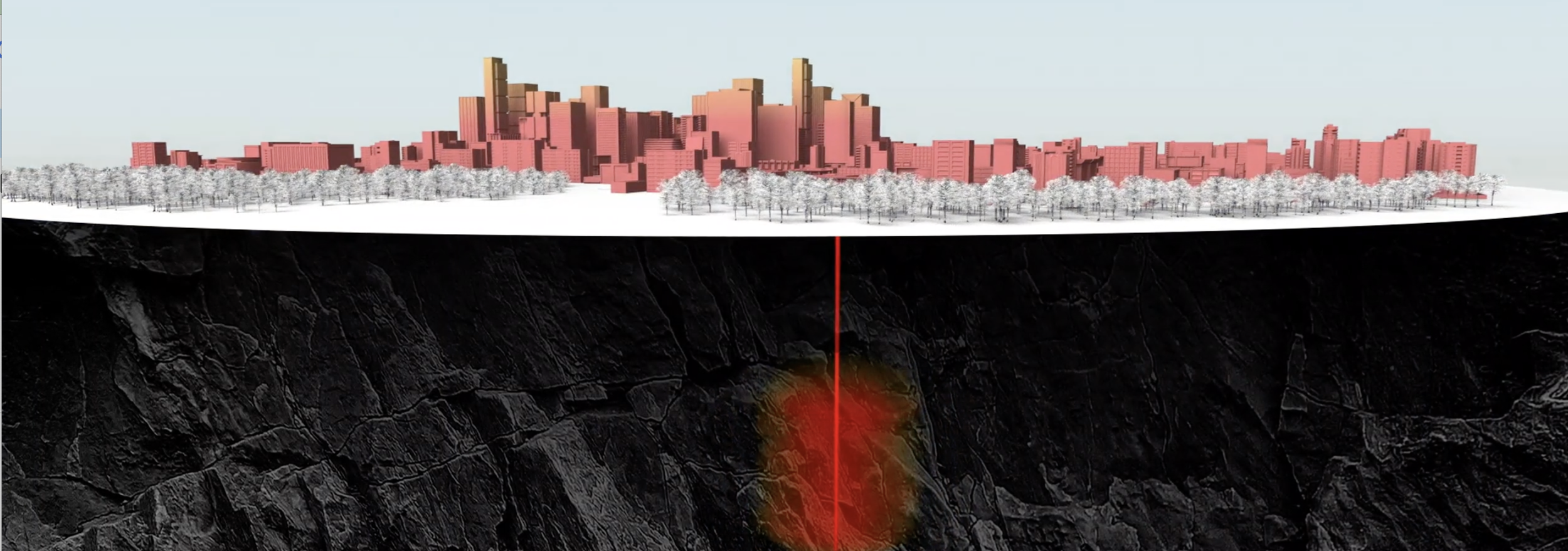

Unique solution for cost-effective storage of surplus heat
Storing and reusing heat from district heating plants instead of releasing it into the air or waterways is an investment in energy efficiency. With Hydroc's cost-effective surplus heat storage, both the environment and extra costs associated with reinforcing the district heating network are saved.
The technology involves creating cracks in the bedrock, heating up groundwater with surplus heat, and letting it circulate in the rock fractures. Then the heat is retrieved when needed, thus enabling the storage of heat from summer to winter. This also enhances the performance of the entire energy system.
The bedrock in a Hydroc storage facility can be equivalent in size to the world's largest pyramid, yet the storage takes up no space above the surface. This contributes to preserving urban planning and the environment, recreational areas, and other land surfaces. Through patented high-tech technology, the cost of heat storage is significantly reduced, potentially leading to a world-unique solution.
In the pilot project being carried out in collaboration with Tekniska verken in Linköping in the Vallastaden district, the heat from the Hydroc storage will warm up several hundred apartments during the cold part of the year.
There is significant potential in this, especially in Sweden and Finland, which have plenty of suitable bedrock. The technology aims to compete with other more expensive alternatives such as borehole storage and pit heat storage and may ultimately involve the storage of solar heat.
Example of cost efficiency:
Investment in an energy-efficient Hydroc storage facility (5 GWh): 10 million SEK Alternatively, reinforcement of the district heating network: 30 million SEK Direct savings: 20 million SEK
CEO: Jan Bergland
GUV contact: Elisabeth Gustafsson